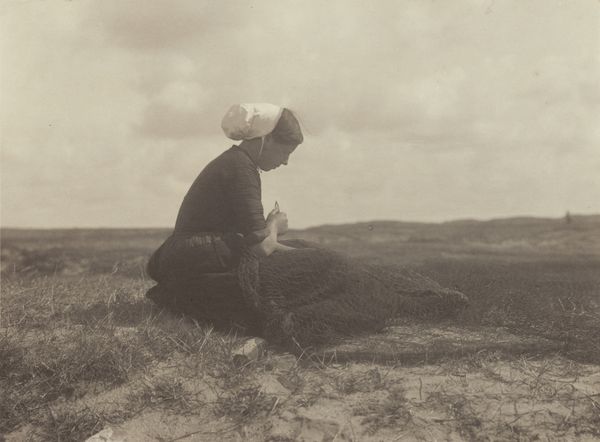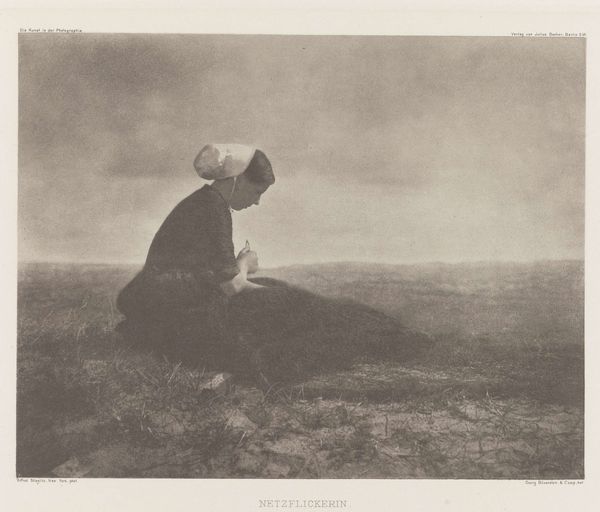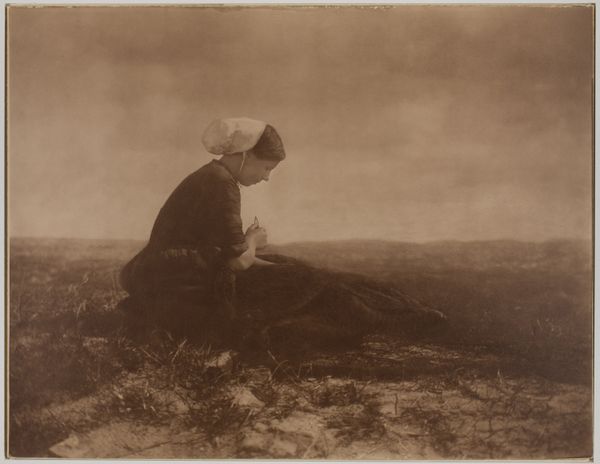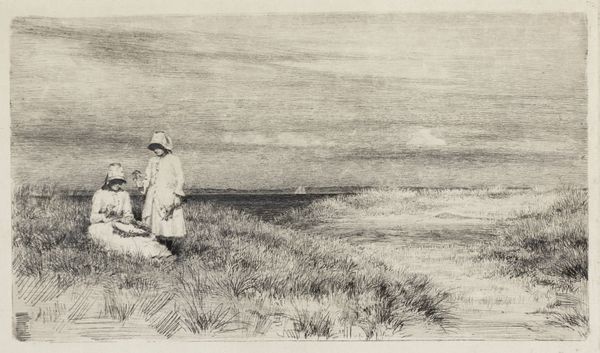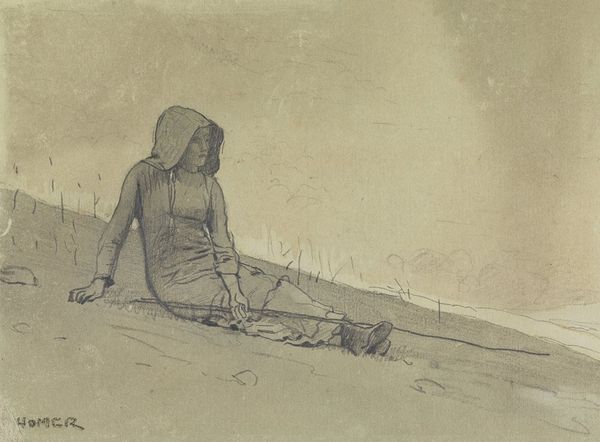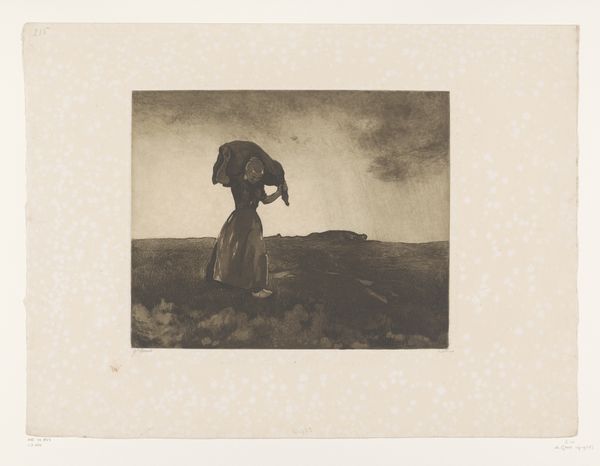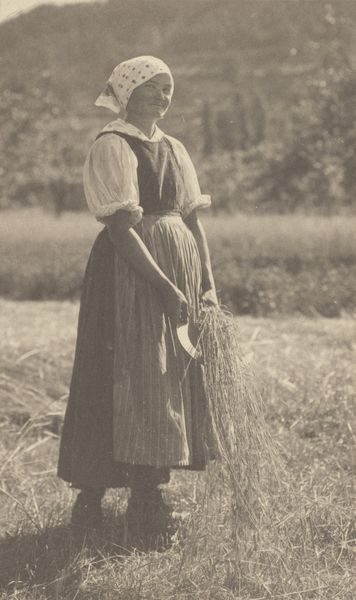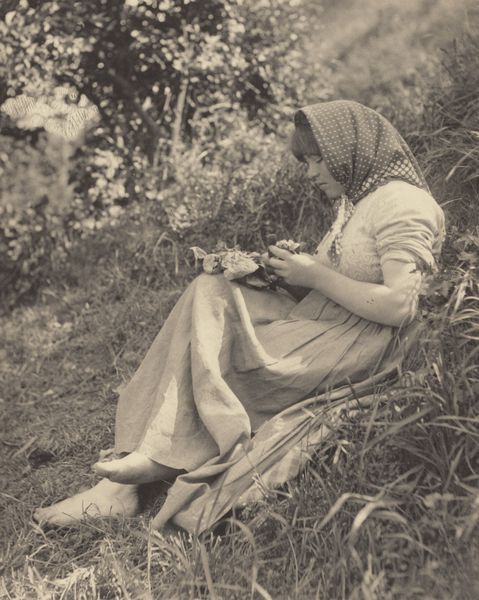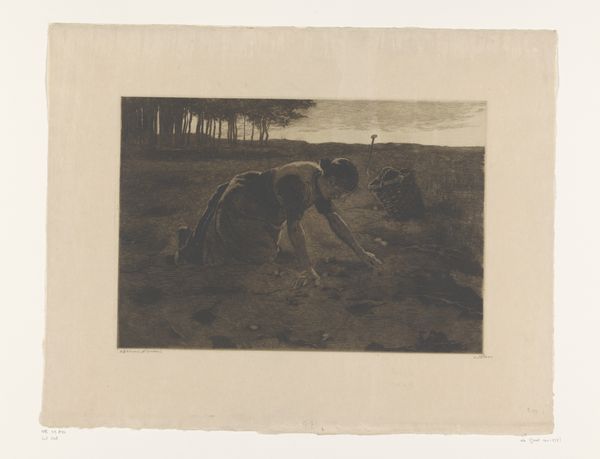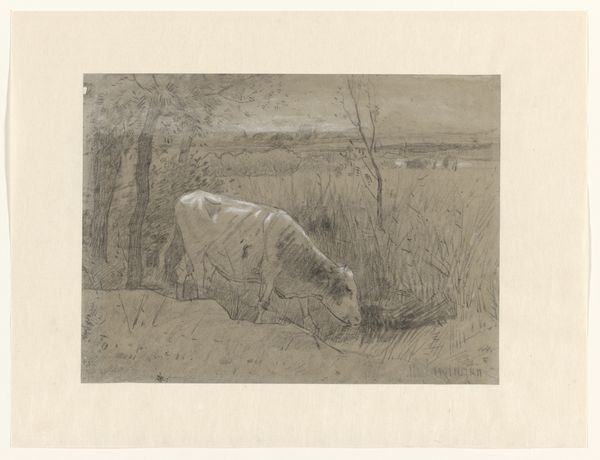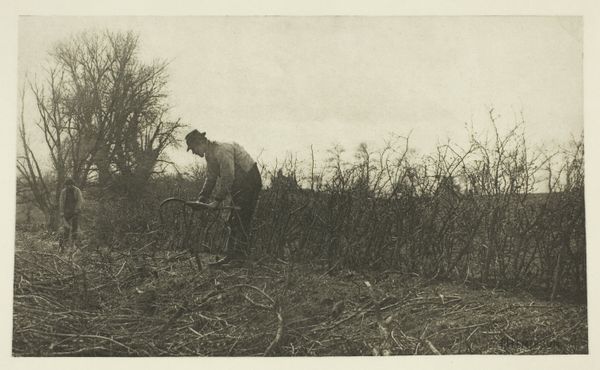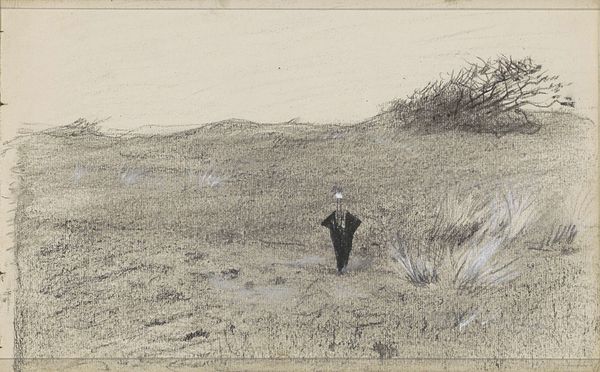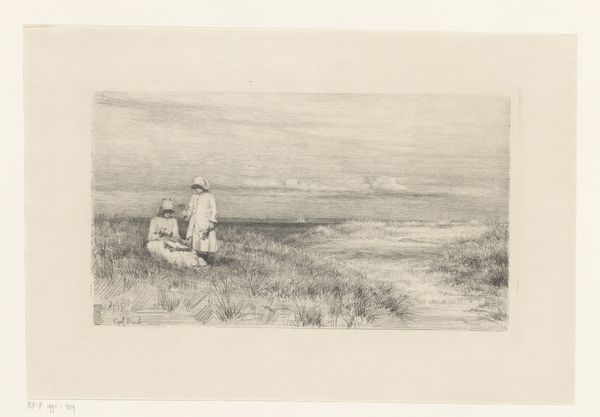
Dimensions: sheet (trimmed to image): 12.3 × 18.4 cm (4 13/16 × 7 1/4 in.) page size: 27.3 × 34.4 cm (10 3/4 × 13 9/16 in.)
Copyright: National Gallery of Art: CC0 1.0
Alfred Stieglitz made this photograph, "On the Dunes," using a technique called photogravure sometime in the late 19th or early 20th century. It depicts a woman in traditional dress seated on a sandy landscape. Stieglitz, a key figure in the Photo-Secession movement, aimed to elevate photography to the status of fine art. This image creates meaning by evoking a sense of timelessness. Its soft focus and muted tones recall the aesthetics of painting, aligning it with established artistic traditions. Made in a time of rapid industrialization, this photograph presents a deliberately timeless, rural subject. Was Stieglitz commenting on the changing social structures of his time? Perhaps he was self-consciously aligning himself with conservative artistic values that resisted the modern world. Historians can better understand this image by researching the cultural contexts of the Photo-Secession movement and the social role of women in rural communities during the early 20th century. Through this kind of research we can understand the ways that art is contingent on its social and institutional context.
Comments
No comments
Be the first to comment and join the conversation on the ultimate creative platform.
